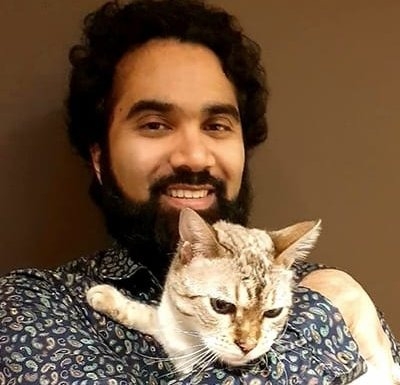Regime’s failure or deliberate policy of targeting opponents?
 Omar Ahmed
Omar Ahmed
 Omar Ahmed
Omar Ahmed
Complicating the situation further is the Hay’at Tahrir al-Sham (HTS)-led regime’s muted stance on aggression by the zionist entity in Syrian territories. This contrasts sharply with its internal crackdown on minorities.
The Alawites – an offshoot of Shia Islam – make up roughly 10% of Syria’s population. Though a minority, they formed the backbone of the former government of ousted president Bashar al-Asad and were heavily embedded in Syria’s military and intelligence structures. That long-standing association with power has made them a target in the post-Asad order.
In March 2025 alone, reports suggested that more than 3,000 Alawites were killed in the northwest in what many have described as a coordinated campaign of ethnic retribution. Other reports said as many as 10,000 Alawites were killed.
Rise of Ahmed al-Sharaa and HTS
Ahmed al-Sharaa, formerly known as Abu Mohammad al-Julani, rose to prominence as the leader of Hay’at Tahrir al-Sham (HTS) – an offshoot of al-Qaeda in Syria. After leading the campaign to oust Asad, the de-facto ruler appointed himself as interim president. This has coincided with the western media’s embrace of Al-Qaeda leader, re-inventing him as a moderate.
While Sharaa has pledged to foster a pluralistic post-Asad Syria, actions on the ground suggest otherwise. In a rare interview, he stated that Syria would “not be a launchpad for attacks on Israel,” effectively distancing his regime from the longstanding Axis of Resistance.
“We are committed to peace with neighbouring countries,” Sharaa told The Times, “and will uphold the 1974 disengagement agreement with Israel.”
Critics argue that this signals a quiet accommodation with Tel Aviv, especially considering the silence over frequent occupation airstrikes on Syrian soil, although the previous government was also notable in not responding to such provocations throughout the duration of the War on Gaza and Lebanon in response to opertion Al-Aqsa Flood.
Escalation of Sectarian Violence
In early March, witness accounts described how Alawites in coastal towns like Baniyas were stopped and asked one question: “Are you Alawite?” A “yes” was frequently followed by execution. Over 1,000 people were killed within 48 hours. According to the the UK-based Syrian Observatory for Human Rights (SOHR), entire families were massacred by militias operating under the new regime’s umbrella.
The violence has not been limited to Alawites. Christians and Druze have also reported targeted intimidation and detentions. According to The Cradle, these acts appear less like the rogue brutality of militia units and more like a coordinated strategy to neutralise communities seen as potential supporters of the former government.
President al-Sharaa has condemned the killings and announced the formation of investigative committees. However, many question the sincerity of this response given the scale and speed of the atrocities. Human rights groups and independent observers have documented cases of security forces directly participating in the killings, suggesting at least partial complicity.
HTS-Lled regime stance on the zionist entity
While the regime carries out domestic repression, its stance on foreign aggression—particularly occupation airstrikes—has been conspicuously passive. Despite repeated bombings by the zionist entity across Syria, the US-Turkish-Qatari-installed rulers have remained silent. When the occupation army’s missiles struck a civilian aid convoy in Homs, HTS neither issued a condemnation nor offered support to the victims. In February, in Quneitra, protestors raised banners calling for “Syrian unity” and “rejecting division” while chanting slogans against the occupation state.
Some analysts interpret this shift as a strategic rebranding, with HTS trading regional confrontation for international legitimacy—at the cost of internal cohesion.
Underlying causes: Failure or Deliberate Policy?
The regime’s defenders argue that the sectarian bloodshed is the result of poor command structures and a lack of cohesion in Syria’s newly merged military – which has integrated the HTS, itself composed of foreign mercenaries. But others suggest the violence reflects a deliberate campaign to remove any threat to the HTS-led order. The systematic nature of the killings—public executions, scorched villages, house-to-house raids—points to something far more sinister than battlefield chaos.
The United Nations and several regional powers, including Iran, Russia, and Turkiye, have called for immediate investigations and accountability. Yet the HTS-led regime’s close alignment with Ankara, and its neutrality on the zionist entity, may be insulating it from broader condemnation. A growing number of Syrians, however, are voicing anger not only at the atrocities but at what they see as the abandonment of Syria’s sovereignty.
As the western media attempt to launder the image of an ex-al-Qaeda emir into that of a respectable head of state, the blood of innocents continues to flow along Syria’s coasts and hills. The real question, then, is not whether the regime has failed — but whether it ever intended to succeed in anything other than consolidating its own power at the expense of national sovereignty, resistance, and the lives of Syria’s most vulnerable.

No comments:
Post a Comment